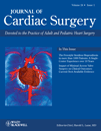Development and Training of Skeletal Muscle Ventricles with Low Preload
Abstract
One-layered skeletal muscle ventricles (SMV) were constructed from latissimus dorsi (LD) muscles extrathoracally in six calves and trained under electrical stimulation on totally Implanted mock circulation systems. These ventricles had low preloads of about 5 mmHg. The results showed that training against a resistance similar to the human aorta does not create an effective blood pump. But conditioning against a highly compliant workload makes them six times more effective. Therefore, further research on this observation is mandatory. After a conditioning of 16 to 63 days, all implanted mock circulations became infected due to perforated skin, so these experiments had to be terminated. To avoid these infections, we developed and tested an intrathoracic implantable mock circulation system with a highly compliant workload. With a double-layered muscle pump, systolic pressure 120–140 mmHg was generated and an output of more than 31/min was obtained. SMVs with a low end-diastolic pressure seem to be suitable for construction of an effective blood pump between the left atrium and the aorta as a left heart assist device.




